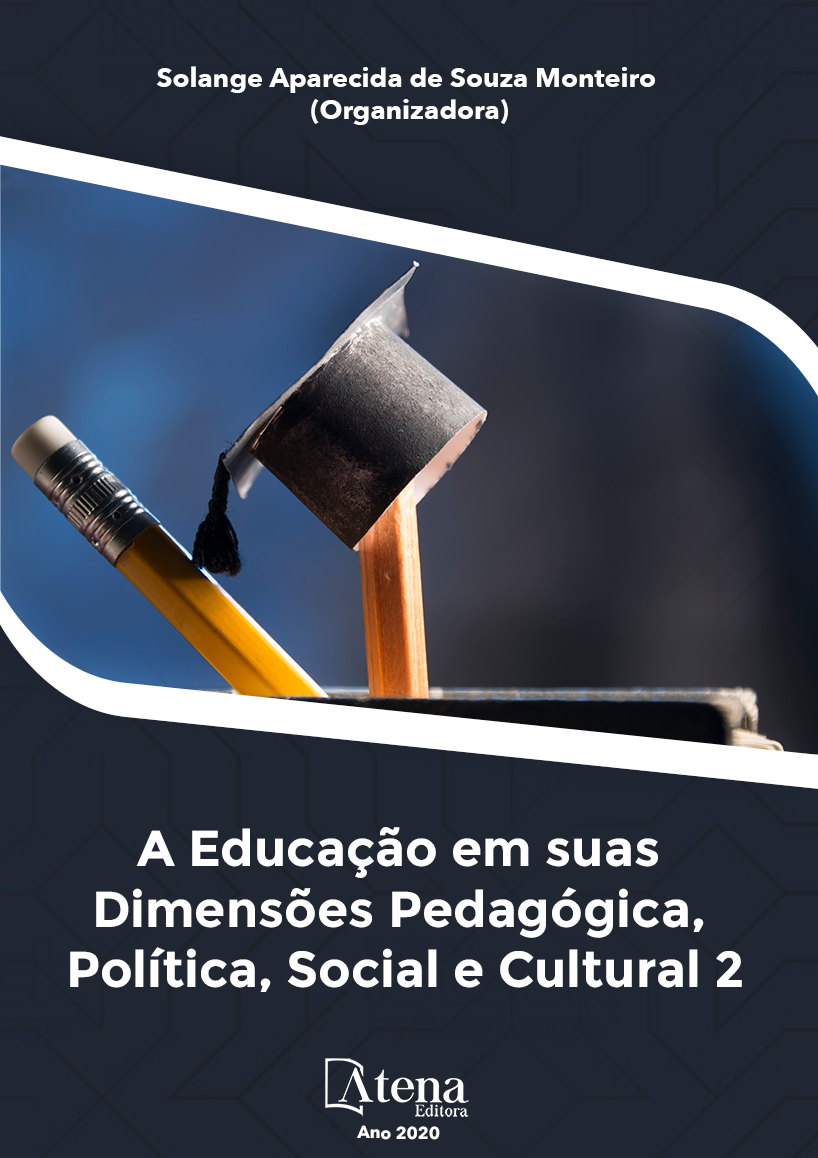
Educação do Jovens e Adultos: do direito à realidade
A presente pesquisa tem como
objeto a relação entre o direito à educação
e a educação de jovens e adultos (EJA).
Considerando o direito à educação previsto na
legislação do país, em especial na Constituição
Federal do Brasil de 1988, no Estatuto da
Criança e do Adolescente de 1990 e na Lei de
Diretrizes e Bases da Educação Nacional de
1996, objetiva-se analisar o direito conferido
legalmente e a sua correlação com os dados
reais, apresentados por institutos de pesquisa,
como o Instituto Brasileiro de Geografia e
Estatística (IBGE), refletindo a respeito da face
excludente do analfabetismo. De acordo com o
IBGE, em 2013, o Brasil apresentou uma taxa
de 8,5% de analfabetos com 15 anos ou mais,
o que corresponde a 13 milhões de pessoas
destituídas de noções mínimas de leitura,
escrita e cálculo. Essa privação conduz à
desqualificação profissional e social, resultando
em patologias sociais e segregação espacial.
Para a realização dessa pesquisa, utilizouse pesquisa bibliográfica e documental, tendo
como referencial teórico as obras de Freire,
Gadotti, Romão, Oliveira, Cury, Ferraro, Flach
e dados dos institutos de pesquisa. Apesar
de se tratar de uma pesquisa que se encontra
em andamento, foi possível observar que o
analfabeto no Brasil tem classe social, cor/
raça e localização geográfica bem definida,
uma vez que, dentre os 25% dos mais ricos,
apenas 2% são analfabetos, enquanto para os
25% dos mais pobres, 13,1% são analfabetos;
em relação ao fator raça/cor, 5,2% dos brancos
são analfabetos, enquanto a taxa para negros
é mais que o dobro, 11,5%. No quesito
geográfico, tem-se que 53% dos analfabetos do
país encontram-se na região Nordeste. Nesse
descompasso entre o texto legal e a realidade,
a EJA apresenta-se como “a modalidade de
educação básica destinada à inclusão escolar
daqueles que tiveram negado o direito ao ensino
regular na idade própria, daqueles que foram
marginalizados e excluídos dos benefícios
das conquistas econômicas, políticas, sociais
e culturais” (ROMÃO; GADOTTI, 2007, p.9);
portanto, a EJA se constitui num instrumento de
inclusão e afirmação, que precisa ser mantido e
não substituído por provas que conferem diplomas sem a efetivação das aulas.
Educação do Jovens e Adultos: do direito à realidade
-
DOI: 10.22533/at.ed.28320130211
-
Palavras-chave: Educação de jovens e adultos; Legislação; Inclusão.
-
Keywords: Youth and adult education; Legislation; Inclusion
-
Abstract:
This research work has the goal of establishing a relation between the
right to education and the reality in education of Youth and Adults (EJA). Considering
the right to education guaranteed in the national legislation, especially in the Federal
Constitution of Brazil of 1988, the Statute of Children and Adolescents dated 1990
and the Law of Guidelines and Bases of National Education from 1996, the objective
is to analyze the right that is legally conferred and its correlation with real data. Such
information is presented by research institutes, such as the Brazilian Institute of
Geography and Statistics (IBGE), reflecting on the exclusionary aspect of illiteracy.
According to IBGE Institute, in 2013, Brazil had an illiteracy rate of 8.5% corresponding
to people aged over 15 years old, which represents 13 million people lacking the
minimum notions of reading, writing or basic mathematics skills. This knowledge
deprivation leads to professional and social disqualification, also resulting in social
pathologies and spatial segregation. To carry out this research, we used bibliographic
and documentation research, as well as using theoretical reference of the works of
Freire, Gadotti, Romão, Oliveira, Cury, Ferraro, Flach and data from research institutes.
Although this is an ongoing research, we were able to observe that the groups of
illiterate people in Brazil have a well-defined social class, ethnicity and geographical
location, since among the 25% poorest section of society, only 2% are illiterate. While
among the 25% poorest section, 13.1% are illiterate. Regarding the ethnicity factor,
5.2% of white people are illiterate, while the rate for the black population is more than
double, 11.5%. In geographical terms, 53% of the country’s illiterate people live in the
Northeast. In the context of this mismatch between the legal text and the reality, EJA
presents itself as “the modality of basic education aimed at scholar inclusion of those
who had been denied the right to regular education at their own age. Also those who
were marginalized and excluded from the benefits of economic, political, social and
cultural achievements” (ROMÃO; GADOTTI, 2007, p.9); Therefore, EJA represents
a tool of inclusion and affirmation, which needs to be maintained and not replaced by
tests that confer diplomas without the completion of courses.
-
Número de páginas: 15
- Neide Cristina da Silva
- maria josé poloni


